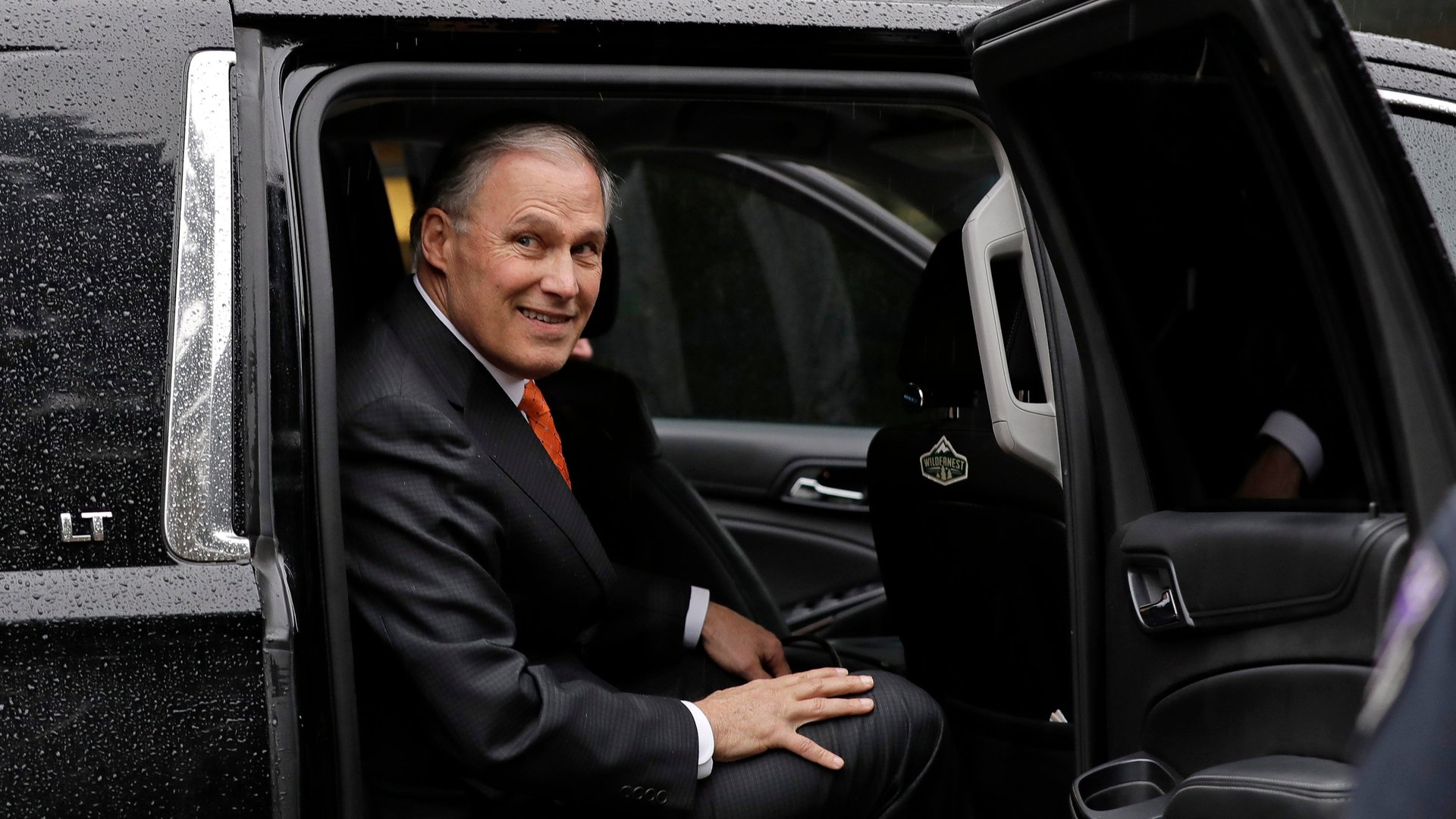Jay Inslee is challenging Democrats to reject the filibuster
The big ambitions on the table in the Democratic primary—a Green New Deal, universal health care, breaking up tech giants—all face one huge obstacle: the Senate filibuster.


The big ambitions on the table in the Democratic primary—a Green New Deal, universal health care, breaking up tech giants—all face one huge obstacle: the Senate filibuster.
Washington governor Jay Inslee, an experienced Democratic politician without a large national profile, is mounting a presidential campaign focused on fighting climate change, and he argues that doing that means getting rid of the procedural tactic, which allows senators to require a super-majority of 60 or more votes to pass legislation.
In 2020, the 33 states choosing a senator offer a favorable playing field for the Republicans, so political forecasters expect that even if a Democrat defeats president Donald Trump, they are unlikely to have a filibuster-proof majority in the upper legislative chamber. That makes the question of how candidates will enact the far-reaching policy changes they favor important.
“We’ve got to get rid of the filibuster to move against climate change,” Inslee said today (March 10) during an event at South by Southwest (SXSW), the technology and arts conference in Austin, Texas, adding later that doing so would also allow action on gun safety legislation. He challenged his fellow presidential contenders to commit to ending the practice, which would require a majority vote in the Senate. It isn’t outside the realm of possibility: In recent years, Democrats and Republicans eliminated the application of filibuster rules for judicial nominees.
Inslee and South Bend, Indiana mayor Pete Buttigieg, the other executive-branch official running for the White House, have both endorsed ending the 60-vote requirement, in favor of allowing a simple majority of senators to bring a bill to the floor.
Senators have been more reluctant. While Elizabeth Warren has said she would consider calling for an end to the rule, Bernie Sanders says he is “not crazy” about the idea, and Kamala Harris says she is conflicted. It’s hard to imagine the best-polling undeclared candidate, former vice president Joe Biden, calling for an end to the practice after his long career as a lawmaker.
“I would rather not,” Julian Castro, a Democratic presidential candidate, said at SXSW when asked about the ending the filibuster. “But, if the choice is between everybody having health care or 60 votes in the Senate, then yes, we will break the filibuster,” added the former mayor of San Antonio and secretary of the Department of Housing and Urban Development.
Contrary to popular depictions of the practice, like in the film Mr. Smith Goes to Washington, senators no longer need to deliver marathon speeches to block votes. The filibuster has been used by both parties to block legislation that would otherwise have had majority support among lawmakers. Political scientists say the procedure morphed in recent decades to become a key tool of partisan polarization (paywall). Most major legislation, from the 2017 tax cuts to the 2010 Affordable Care Act, is designed to carefully dodge the filibuster, which tends to result in complicated kludges.
Those in favor of keeping the filibuster argue that it is a key tool for protecting minority rights and moderating political majorities. They conjure up fears of the kind of legislation that Trump might pass today, though the procedure has been used to block civil rights legislation, too. It’s also seen as a way to protect the unique character of the Senate, where individual legislators are given great latitude compared to the House of Representatives. Mark Schmitt, a former Senate aide, argues that this view is mostly nostalgia and not the reality of the Senate under Republican Mitch McConnell.
In the 2016 primaries, Sanders, arguably today’s front-runner, used the promise of a “political revolution” to explain how he would expand health care coverage and offer free college in a divided government. In 2020, his rivals for the Democratic nomination are going to push for more specifics on how that gets done—starting in the Senate.